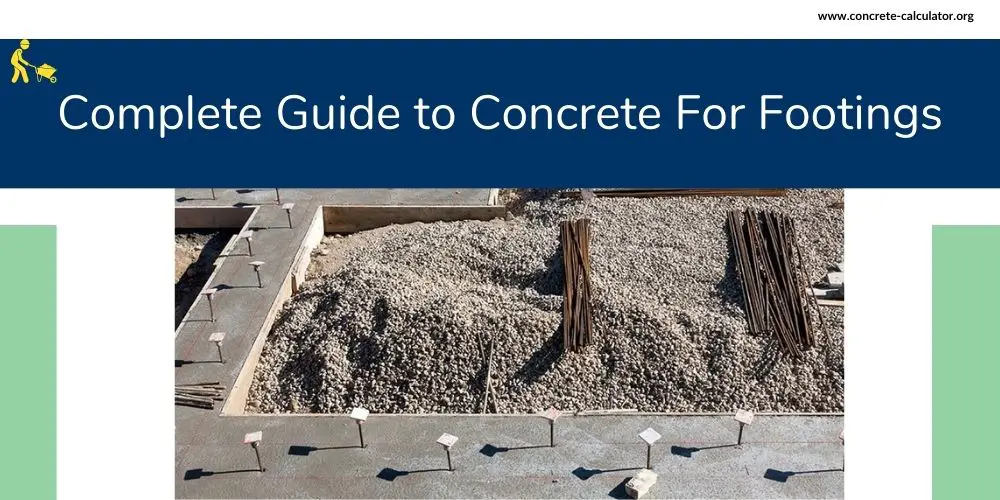If you are planning on building a new home or renovating an existing one, you might have heard about the importance of concrete footings. These footings are an essential part of any construction project, as they help to support the weight of the building and keep it stable.
In this blog post, we will guide you through everything you need to know about concrete footings, including what they are, where they are used, and, most importantly, the best concrete mix to use for footings.

What Are Concrete Footings?
Concrete footings are structures made from concrete that serve as a foundation for buildings and other structures. They are typically used to support the weight of the structure and distribute the load evenly, preventing any settling or sinking of the foundation.
Concrete footings can either be shallow or deep, depending on the soil type and the load-bearing capacity of the soil. Generally, shallow footings are used for smaller structures such as sheds and garages, while deep footings are better suited for heavier structures like homes.
You May Also Use Concrete Bags Calculator For Calculating Concrete For Footings!
The Best Concrete Mix For Footings
The best concrete mix for footings is 1 part cement, 2 parts sand, and 4 parts stone (aggregate by volume). It should also be able to withstand weather changes and the forces of nature. Generally, a mix of one part cement, two parts sand, and three parts aggregate is recommended for footings. This mix is known as a standard mix and is widely used in construction projects.
However, if you are looking for a stronger mix, you can increase the amount of cement in the mix. This is referred to as a modified mix and it will provide your footing with greater strength and durability.
When choosing a concrete mix for footings, it’s important to consider the environment where the structure is being built. For example, if the structure is being built in an area that experiences heavy rainfall, you may want to opt for a mix with higher water resistance.
Where Are Concrete Footings Used?
Concrete footings can be used for a variety of structures, from small sheds and garages to homes and commercial buildings. They are typically used when setting up foundations for these structures, as they are very stable and provide even weight distribution. They are also often used for retaining walls, decks, and patios to help support the structure.
Overall, concrete footings offer a strong and reliable foundation that can be tailored to suit the specific requirements of your project. When installed correctly, they will ensure a solid base for your structure and make sure it is safe and secure for years to come.
Also Read: Concrete For Basketball Hoop

The Mixing Process
When mixing the concrete for footings, it is important to ensure that all the components are thoroughly mixed, and that the mix has a consistent texture. This will ensure that the footings are strong and sturdy.
You should also make sure to use the correct amount of water, as too much or too little water can weaken the mix. The concrete should also be poured within a specific time frame, as the mix can harden quickly and become difficult to work with.
Related Post: Can You Grow Concrete
FAQ’s
How thick should concrete footings be?
The thickness of the footing will depend on the type and size of the structure being built, as well as the soil type. Generally speaking, footings should be at least 8 inches thick and have a minimum width of 12 inches.
What type of mix should I use?
The type of mix you should use will depend on the specific requirements and conditions of your project. In general, most concrete mixes offer good strength and stability, but if you are working in an area with extreme temperatures or an environment exposed to corrosive substances.
What other materials do I need to install concrete footings?
In addition to the concrete mix, you will also need to have some other supplies on hand for installing footings. These include gravel, rebar, wire mesh, and joint material. All of these materials help make sure that the footings are strong and secure.

